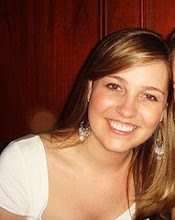
It was a slight disappointment to watch the lights dim and notice that many seats were not filled in the orchestra section of the
Colonial Theatre for the Saturday, February 7 matinee of Peter Morgan’s
Frost/Nixon.
Those involved with the national tour of Frost/Nixon donated over 100 free tickets to Boston University Communications students to attend the Saturday afternoon performance, so many of the occupied seats in the theater were taken by those students.
The scattered empty seats, as well as the sound of person snoring mid-performance, were hardly indicative of the performance’s over all magnetism yesterday afternoon.
The play uses an ingeniously sparse and simplistic set, which allowed for standout performances and easy, quick movement between scenes.
In the opening scene, Nixon is seated behind a plain, yet presidential wooden desk. The scene changes are noted by simple changes in chairs. Two rolling chairs become two airplane seats. The airplane seats become a 1970’s era sofa. The real scenery seems to be the bright outlines and dramatic figures of each of the actors on stage. Body language becomes very important and dramatic.

Another brilliant touch to the scenery is a large screen, divided into smaller squares, situated behind the actors above the stage. It performs a multitude of functions.
It is used to indicate travel between various places, showing a 1970’s silver Cadillac whizzing by palm trees while distinctively 70’s music plays.
During the interviews, the cameras used as props on the stage broadcast the footage to the screen in the background to allow the audience more intimate “TV style” close-ups of Frost and Nixon. Usually stage actors don’t need to rely much on subtle facial expressions but Alan Cox (Frost) and Stacy Keach (Nixon) are faced with the challenge of converting to television acting and must focus deeply on facial expressions. Both do so successfully and help to capture the extreme emotional intensity of the situation.
The Colonial Theater on February 7, 2009Jen Judson
Because of the screen, one can see, more clearly and deeply, Frost’s desperation to keep Nixon on track and his confident transformation during the final interview. One can also see Nixon fall out of his pompous demeanor and into an exhausted man who is finally forced to admit his guilt.
The lighting in the play is well done and must have been a challenge for the technicians. Scenes often change simply by switching a strategically placed spotlight on an actor and away from another. Actors must stand in the perfect spot on stage at all times, in order to be hit by the spotlights correctly. The only disadvantages to this type of lighting used for scene changes is that it caused some of the actors to stand a bit too rigidly, as if they were trying deliberately to stay in a thin stream of bright light.
Stacy Keach performed the character of Richard Nixon flawlessly. He never fell out of character, whether it was through his body language or voice. Keach improved on this throughout the play as well. There was a sense he was warming up early on in the play.
Alan Cox also delivered a lively performance as David Frost. He and Keach had wonderful stage chemistry. This was apparent in the scene where Nixon “drunk dials” Frost and admits to his personal shortcomings and how he has never felt good enough. They do not look at each other throughout this entire scene but the connection between the two is obvious.
Two actors who could be replaced are Roxanna Hope, who plays Caroline Cushing and Ted Koch, who plays Jack Brennan. Hope had difficulties assuming an almost unidentifiable accent, which was distracting. Her romantic relationship with Frost, portrayed in the play, can be described as slightly awkward. Koch, although his performance overall was good, he pushed a raspy military voice to the point it seemed unnatural at times.

The play had moments that were less than riveting, however, the final interview scene was gripping. Frost no longer sat back in his chair with a leg crossed over the other, he sat on the edge of his seat and stared intensely into Nixon’s face. Nixon’s agitation contributed to the suspense.
Free ticket courtesy of BU COM
The desperation of both men played into the build-up of the final interview.
For a play relying deeply on conversation to keep the pace and form the plot, rather than on action, it was a surprisingly intense ride through one of the most famous television interviews of all time.





